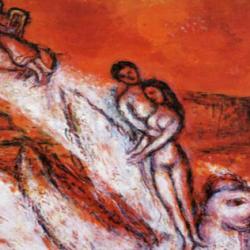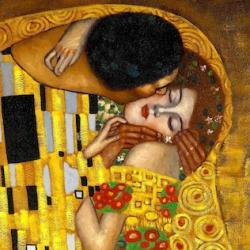The presence of a lover can wound. So, of course, can separation. Commenting on the Bride’s search for her lover in the streets of the city, Paul Griffiths writes that “Love’s separation wounds are everywhere in scripture and tradition,” citing Israel’s exile, Peter’s tears, and Mary’s lamentation for her son ( Song of Songs (Brazos Theological Commentary on the Bible) , 125).
And the trope is obviously not confined to the Bible: “She wanders, searching and suffering, and is beaten and wounded. She is desolate. This is love’s story in a nutshell for all of us: it is Dido, wounded by Aeneas’s departure and weeping and dying in flames for it; it is Jude Fawley, wounded by Sue Bridehead’s absence as much as by her presence, separated from his children by murder and suicide and dying in disappointment; it is King Lear’s grief-death, sundered from the daughters he has loved by their murders, suicides, and executions.”
All love’s wounds figure the cross: “Love’s separation wounds are incised deeply into all our bodies, and the Song’s thematization of them permits them, rightly heard, to appear in their living and bloody glory.”















